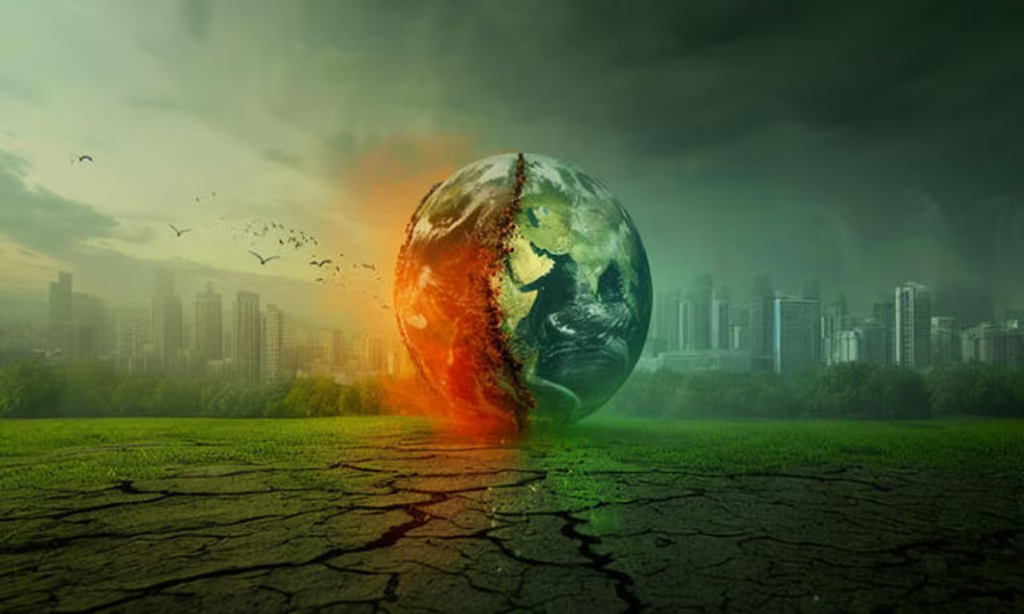Climate Change and Insurance: Adapting to a New Risk Landscape
Explore how climate change is reshaping the insurance industry, increasing risks, premiums, and driving innovation in coverage strategies.
As climate disasters grow, the insurance industry faces mounting pressure to evolve.
Climate change is no longer a distant threat—it’s a present reality. Wildfires, hurricanes, floods, and droughts are intensifying, causing unprecedented damage to homes, businesses, and infrastructure worldwide.
In this volatile environment, the insurance industry finds itself at the forefront of risk assessment and financial recovery. Yet, this is not just a challenge of cost—it’s a test of sustainability, innovation, and adaptation.
As global temperatures rise and weather patterns become more extreme, the ripple effects are transforming how insurance companies operate. They must recalculate risk, redesign products, and reassess where and how they offer coverage.
For policyholders, this shift means higher premiums, reduced availability, and an urgent need to understand how climate dynamics influence their protection. In this new age of uncertainty, insurance becomes both a buffer against loss and a driver of resilience.

The Evolving Role of Insurance in a Climate-Driven World
Climate change introduces risks that are complex, unpredictable, and regionally varied. For insurers, this means rewriting the rules of engagement.
Traditionally, coverage models were based on historical data—what happened in the past informed the future.
But now, past trends are no longer reliable predictors. With more volatile weather events and rising sea levels, insurers face increased claims and growing uncertainty.
One major impact has been the surge in insured losses. According to global reinsurance reports, climate-related catastrophes have caused tens of billions in annual losses—figures that are only expected to climb.
As a result, insurers are tightening underwriting standards, withdrawing from high-risk areas, and re-evaluating entire portfolios.
For example, some providers in parts of California and Florida have reduced coverage options due to the escalating risk of wildfires and hurricanes.
Premiums, Policies, and Protection Gaps
As the cost of claims rises, so too do premiums. In areas prone to natural disasters, homeowners may face steep increases in insurance rates or even find their policies canceled altogether.
This trend exacerbates what is known as the “protection gap”—the growing divide between total economic losses and those that are insured.
In vulnerable regions, this gap leaves individuals and businesses exposed to massive financial risks. The underinsured may be forced to cover significant losses out of pocket, pushing many toward economic hardship.
Low-income communities, in particular, are disproportionately affected, as they may struggle to afford rising premiums or qualify for adequate coverage.
Insurance is meant to be a safety net—but without adjustments, that net risks becoming inaccessible to those who need it most.
Innovating Insurance: Toward Climate-Resilient Solutions
The insurance industry isn’t standing still. To address emerging risks, companies are investing in new technologies and strategies.
Satellite imaging, AI-driven predictive models, and real-time climate data are being used to improve risk assessment and streamline claims.
Insurers are also collaborating with governments, businesses, and NGOs to support mitigation and adaptation efforts.
New types of policies are also emerging. Parametric insurance, for instance, pays out based on predetermined triggers (like rainfall or wind speed), allowing for faster claims processing.
Some providers are introducing climate-resilience incentives—offering discounts to homeowners who install storm-resistant windows or elevate their properties in flood zones.
In reinsurance, climate risk is now a central topic, leading to revised capital reserves, stronger risk-sharing models, and an emphasis on sustainability in investment portfolios.
The Future of Climate and Insurance: Shared Responsibility
As climate risks intensify, so too does the need for a collective response. Insurance cannot shoulder the burden alone.
Governments must invest in resilient infrastructure, enforce building codes, and update zoning laws. Communities must adopt proactive disaster planning.
And individuals must understand their exposure, take steps to reduce risks, and make informed coverage decisions.
At the same time, insurers must continue to evolve—not just in pricing, but in purpose. The future of insurance lies not only in paying for damages but in preventing them.
Education, risk prevention, and resilience planning will become just as important as underwriting and claims.
Conclusion
Climate change and insurance are now inextricably linked. What was once a distant concern is now a daily calculation for both insurers and the insured.
The path forward demands adaptability, innovation, and collaboration. While the challenges are significant, so too are the opportunities—to build a more resilient, informed, and protected world in the face of an uncertain climate.





